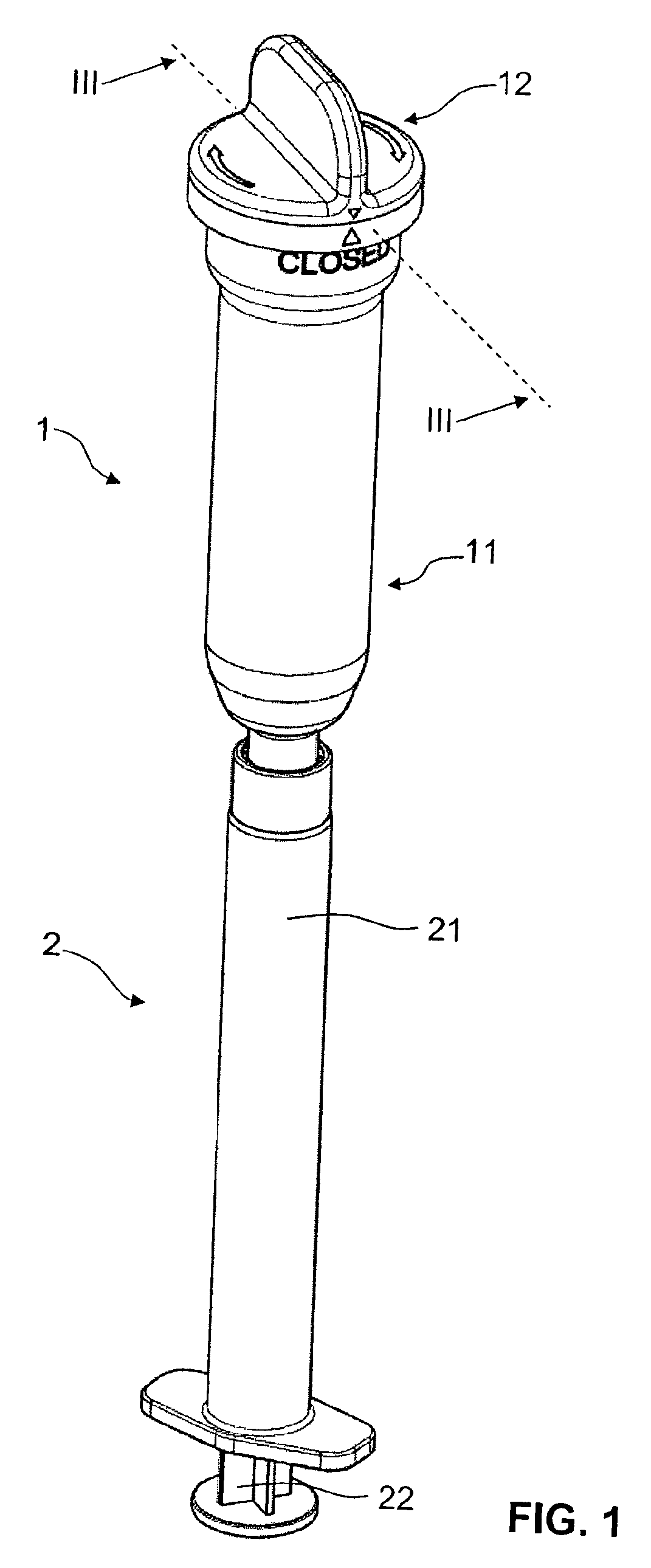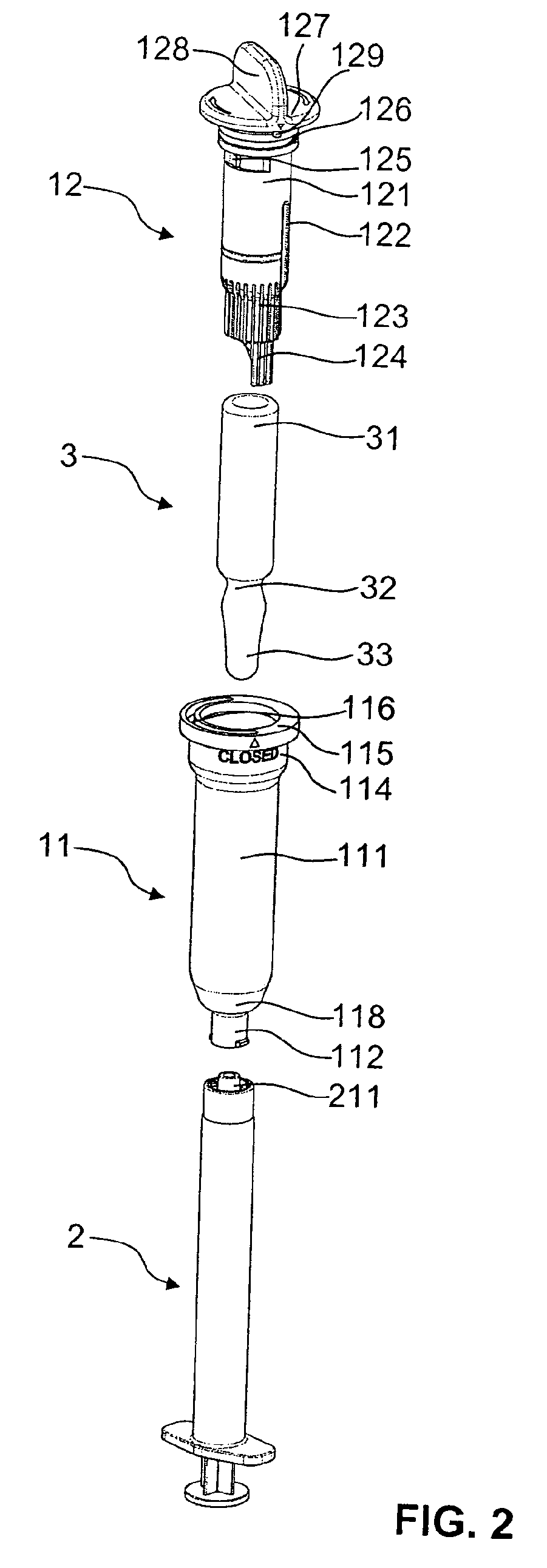Device for opening an ampoule
a technology for ampoules and ampoules, which is applied in the field of ampoules for opening devices, can solve the problems of large amount of force required to break ampoules, complex devices in design and correspondingly expensive manufacture, and large space requirements of devices, so as to increase the flexibility of devices
- Summary
- Abstract
- Description
- Claims
- Application Information
AI Technical Summary
Benefits of technology
Problems solved by technology
Method used
Image
Examples
Embodiment Construction
[0047]FIGS. 1 to 16 show a first embodiment of an opening device in accordance with the invention. The opening device 1, which comprises a housing 11 and a rotary element 12 inserted into the housing 11, is intended for opening an ampoule 3 and is here connected to a syringe 2. To open the ampoule 3 the rotary element 12 can be rotated relative to the housing 11 in an actuating direction. In the following the actuating direction is always the circumferential direction in which the rotary element 12 is rotated relative to the stationary housing 11 in order to open the ampoule 3. The distal direction of the opening device 1 extends from a proximal insert opening of the housing 11 to a distal outlet opening 113 and corresponds with the direction in which the ampoule 3 can be inserted with the ampoule head 33 first into the opening device 1. The proximal direction is the direction contrary to the distal direction.
[0048]The ampoule 3, which can be seen more particularly in FIG. 2, is an ...
PUM
 Login to View More
Login to View More Abstract
Description
Claims
Application Information
 Login to View More
Login to View More - R&D
- Intellectual Property
- Life Sciences
- Materials
- Tech Scout
- Unparalleled Data Quality
- Higher Quality Content
- 60% Fewer Hallucinations
Browse by: Latest US Patents, China's latest patents, Technical Efficacy Thesaurus, Application Domain, Technology Topic, Popular Technical Reports.
© 2025 PatSnap. All rights reserved.Legal|Privacy policy|Modern Slavery Act Transparency Statement|Sitemap|About US| Contact US: help@patsnap.com



